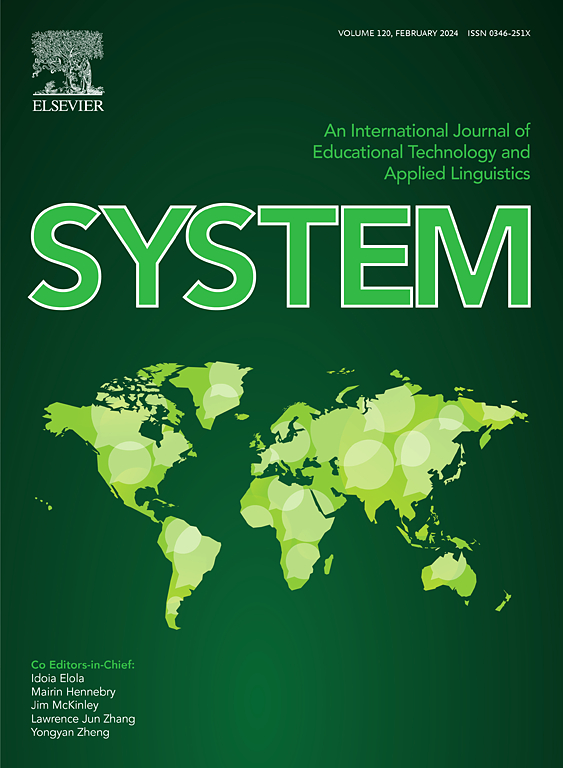Exploring the linguistic signature of interpersonal liking in second language interaction
IF 4.9
1区 文学
Q1 EDUCATION & EDUCATIONAL RESEARCH
引用次数: 0
Abstract
People worry about how they are seen by others, but their insights (called metaperceptions) are often too negative. For instance, many speakers believe that their interlocutors like them less than they actually do, and these overly negative metaperceptions inform speakers' actions such as asking for advice or pursuing friendships. Our goal was to understand if low, underconfident metaperceptions are associated with specific interactional behaviors for second language (L2) speakers, as a way of identifying a “linguistic signature” of insecure metaperceivers. We analyzed 10-min dyadic conversations by 37 L2-speaking university students discussing academic texts. Following the conversation, students provided their metaperceptions (how much they thought their partner liked them) and their actual assessments (how much they liked each other). We coded the conversations for eight measures of utterance fluency (repetitions, repairs, filled pauses, discourse markers) and speaker engagement (lexical content, mean length of turn, backchannels, overlapping speech). Whereas several measures predicted students' metaperceptions, none contributed to their actual assessments. Speakers who felt appreciated by their partner provided more lexical content across shorter conversational turns, whereas those who felt insecure assumed a dominant role speaking in long turns. These findings provide initial insights into how speakers’ metaperceptions manifest in their interactional behavior.
求助全文
约1分钟内获得全文
求助全文
来源期刊

System
Multiple-
CiteScore
8.80
自引率
8.30%
发文量
202
审稿时长
64 days
期刊介绍:
This international journal is devoted to the applications of educational technology and applied linguistics to problems of foreign language teaching and learning. Attention is paid to all languages and to problems associated with the study and teaching of English as a second or foreign language. The journal serves as a vehicle of expression for colleagues in developing countries. System prefers its contributors to provide articles which have a sound theoretical base with a visible practical application which can be generalized. The review section may take up works of a more theoretical nature to broaden the background.
 求助内容:
求助内容: 应助结果提醒方式:
应助结果提醒方式:


